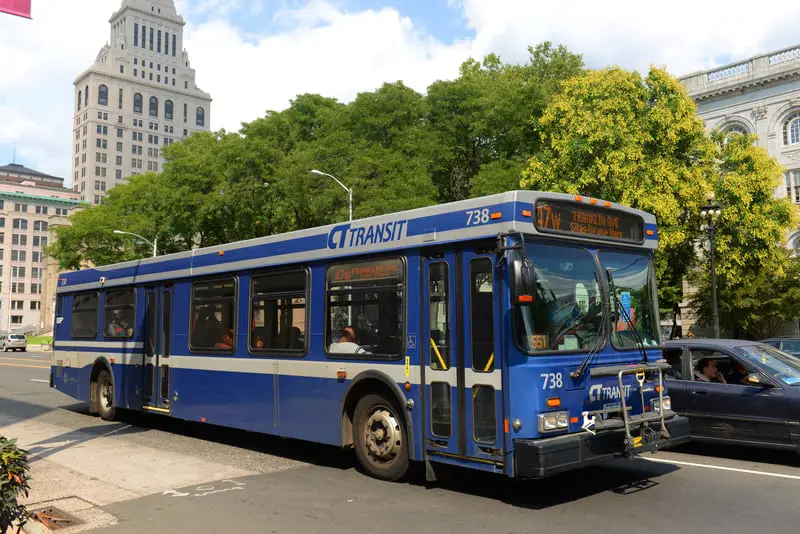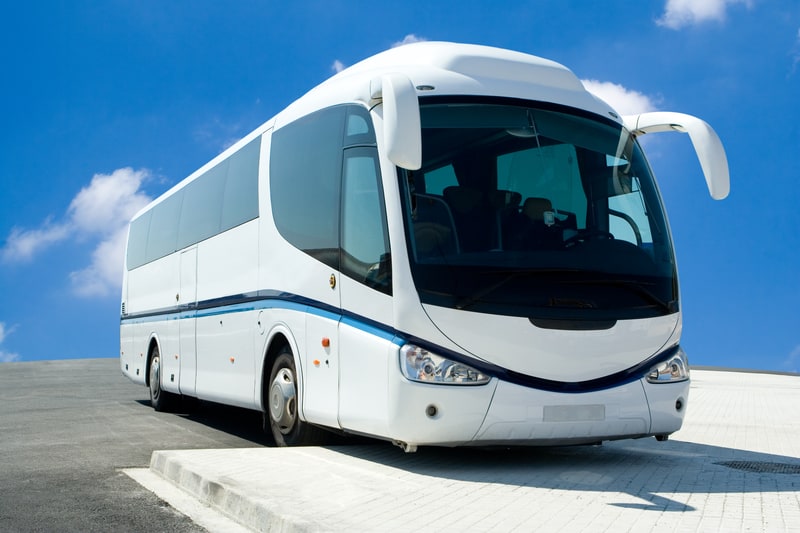
If you’ve had an opportunity to ride on a bus such as a school bus, chances are good that you will have noticed lots of vibrations and even noise, making it hard to converse with the person seated right next to you.
A bus vibrates because it is subjected to two forces. Forced vibrations, such as those caused by mechanical means like a rough road surface. Secondly, resonance, where the natural vibration of the bus body materials is set into motion by the frequency given off by the engine idling.
Body vibrations are a frequent problem associated with buses. Sometimes it can be downright annoying and cause discomfort to passengers.
We have researched what causes buses to vibrate and found the answers, which will not stop the vibrations but will shed light on what causes the vibration.
Why Buses Vibrate
Passengers traveling in a moving bus feel vibration caused by several factors, such as an uneven road surface, overinflated tires, the wrong gear selection, worn shock absorbers, or even a rough-running engine.
Some buses generate significant vibrations when the bus is stationary, and the engine is idling.
The vibration felt by the passengers results from engine vibrations transmitted through the bus’s chassis and body or resonance initiated by the engine’s frequency matching that of the body panels.
Vibrations do not happen independently but require a force to initiate and keep the vibration ongoing.
Let’s explore the vibration-causing factors below for buses while driving and when they’re parked but have the engine idling.
Causes of Vibrations While The Bus Is Driving

Like any other vehicle, when the bus is in motion, extreme forces are exerted onto the road by the tires supporting the vehicle’s weight.
The pressures involved cause forced vibrations which are detailed below.
- Driving on a rough road surface: Rough road conditions or a rough road surface cause vibrations to be transmitted to the bus through the tires and suspension, which are noticeable in the bus’s seat and floor.
- Overinflated tires: Inflating bus tires to the recommended tire pressure results in a much smoother ride than when tires are over-inflated. Hard tires have less flex or give, resulting in more vibrations caused by the road surface transferred to the bus.
- Irregular tire wear: Resulting from hard braking or tire damage causes the tire to bounce as it rotates over the damaged part of the tire tread. The uneven tire surface causes the tire to turn irregularly, causing a vibration that is transmitted to the bus.
- Poorly balanced tires: Unbalanced tires wobble or shake at certain speeds as they rotate. This action causes vibrations that are transferred to the bus.
- Worn shock absorbers: Worn shock absorbers no longer absorb shocks from driving over a bump. The lack of shock absorbers causes tires to bounce, which transfers vibrations to the bus.
Worn shock absorbers negatively affect the handling and stability of the bus; therefore must be replaced.
Worn steering rack, drivetrain, or suspension parts: Worn components such as universal joints create play in the steering rack or suspension components which should otherwise be tight. Worn parts can cause a wheel to wobble, which causes vibrations inside the bus.
A damaged prop shaft, or its universal joints, can become unbalanced, so when it turns at high speed, the vibrations are transferred into the floor and body of the bus.
- Wrong gear selected: Driving in a gear that is too high for the speed at which the bus is traveling can cause the engine to labor excessively, causing vibration. Besides the risk of stalling the engine, the engine’s efficiency is negatively affected when driving the bus in the wrong gear.
- Poorly maintained engine: A poorly maintained engine may run unevenly, increasing the engine vibrations transferred to the bus.
- Faulty engine mountings: Engine mountings are made from a rubber-like material that flexes. The primary purpose is to attach the engine to the chassis or body of the bus. Still, as important, the flexibility of the mounting ensures engine vibrations are absorbed as far as possible.
A damaged engine mounting can cause the engine to come into contact with the chassis or metal mountings of the body, which can cause the engine to vibrate against the firewall when it is running. This vibration will be transferred into the bus’s body and passengers.
- Incorrectly attached exhaust system: A pretty common source of vibration is due to a damaged or misaligned exhaust system. Wear can cause exhaust mountings to break, resulting in the exhaust pipe coming into contact with the body of the bus.
As the exhaust system is connected directly to the engine, engine vibrations or vibrations resulting from the exhaust knocking against the bus’s body parts can cause felt vibrations.
Causes of Vibration While The Bus Is Stationary

When the bus stands still, the vibrations associated with the bus driving are no longer a factor. Vibrations, sometimes awful ones, however, still occur.
These vibrations stem from the following:
- Engine vibration: When the engine is running at low RPMs (revolutions per minute, some bus engines tend to transmit vibrations throughout the body. The vibrations cause windows to shake and can be unsettling to passengers and crew.
This vibration resulting from the engine vibrating is called a forced vibration.
Buses fitted with an air conditioner that runs while the bus is stationary draw more power from the bus engine while the engine is idling.
The additional load of the air conditioner causes the engine to work harder than an engine not driving an aircon. As the engine labors, the engine revolutions decrease, and the vibrations increase.
- Body panel resonance: Resonance occurs when an object is forced to vibrate at its natural frequency.
All materials have a resonance frequency, meaning they’ll vibrate when the correct frequency is applied to an object. An example of resonance is running your finger along the rim of a crystal glass to make it resonate.
The panels making up the body of a bus a pretty large. Although strong, they are not supported or attached to a frame over the entire surface of the material.
The lack of support allows a degree of flex in the material but also allows it to resonate when the correct vibration frequency is applied to the material.
In some buses, the frequency generated by an idling bus engine can closely match that of the bus’s body panel materials which can cause the bus’s body to vibrate. Fortunately, vibrations caused by resonance tend to dissipate naturally as the vibrations lose energy reasonably quickly.
Conclusion
Buses vibrate as a result of forces exerted onto the bus while driving. Vibrations result while the bus is driving by factors such as overinflated tires, unbalanced tires, worn or damaged transmission or suspension components, and more.
When the bus is at a standstill but has the engine idling, vibrations are caused either by engine vibrations being transferred into the bus body or caused by the body components resonating due to the frequency created by the idling engine.
